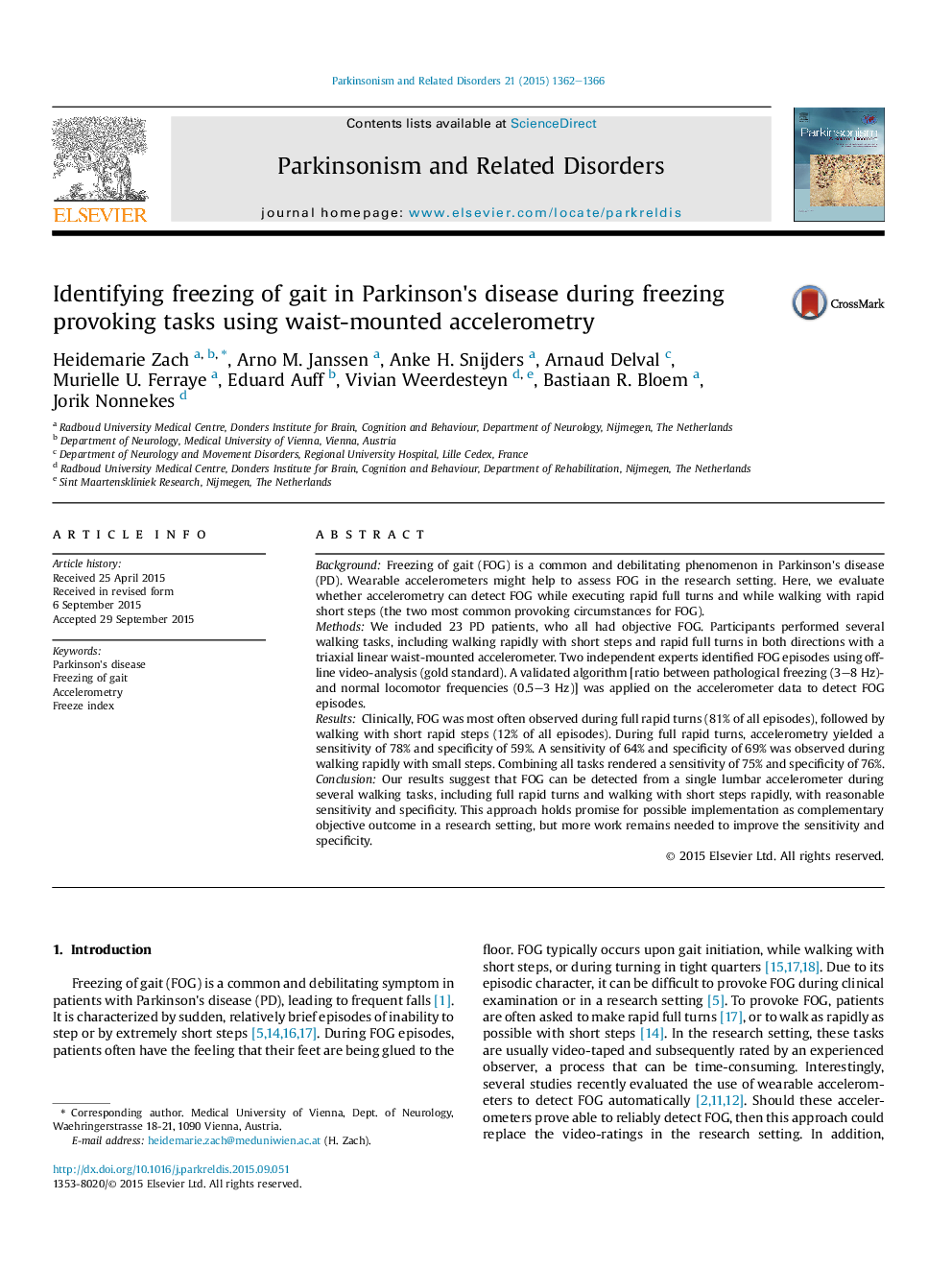| Article ID | Journal | Published Year | Pages | File Type |
|---|---|---|---|---|
| 1920490 | Parkinsonism & Related Disorders | 2015 | 5 Pages |
•We use a single waist-mounted accelerometer to detect Freezing of gait (FOG) with the validated “Freeze Index”.•A reasonable sensitivity and specificity even during “full rapid turns” and “walking with short steps rapidly” is achieved.•This approach holds promise for possible implementation as complementary (and objective) outcome in a research setting.
BackgroundFreezing of gait (FOG) is a common and debilitating phenomenon in Parkinson's disease (PD). Wearable accelerometers might help to assess FOG in the research setting. Here, we evaluate whether accelerometry can detect FOG while executing rapid full turns and while walking with rapid short steps (the two most common provoking circumstances for FOG).MethodsWe included 23 PD patients, who all had objective FOG. Participants performed several walking tasks, including walking rapidly with short steps and rapid full turns in both directions with a triaxial linear waist-mounted accelerometer. Two independent experts identified FOG episodes using off-line video-analysis (gold standard). A validated algorithm [ratio between pathological freezing (3–8 Hz)-and normal locomotor frequencies (0.5–3 Hz)] was applied on the accelerometer data to detect FOG episodes.ResultsClinically, FOG was most often observed during full rapid turns (81% of all episodes), followed by walking with short rapid steps (12% of all episodes). During full rapid turns, accelerometry yielded a sensitivity of 78% and specificity of 59%. A sensitivity of 64% and specificity of 69% was observed during walking rapidly with small steps. Combining all tasks rendered a sensitivity of 75% and specificity of 76%.ConclusionOur results suggest that FOG can be detected from a single lumbar accelerometer during several walking tasks, including full rapid turns and walking with short steps rapidly, with reasonable sensitivity and specificity. This approach holds promise for possible implementation as complementary objective outcome in a research setting, but more work remains needed to improve the sensitivity and specificity.
